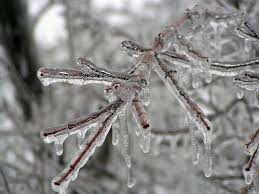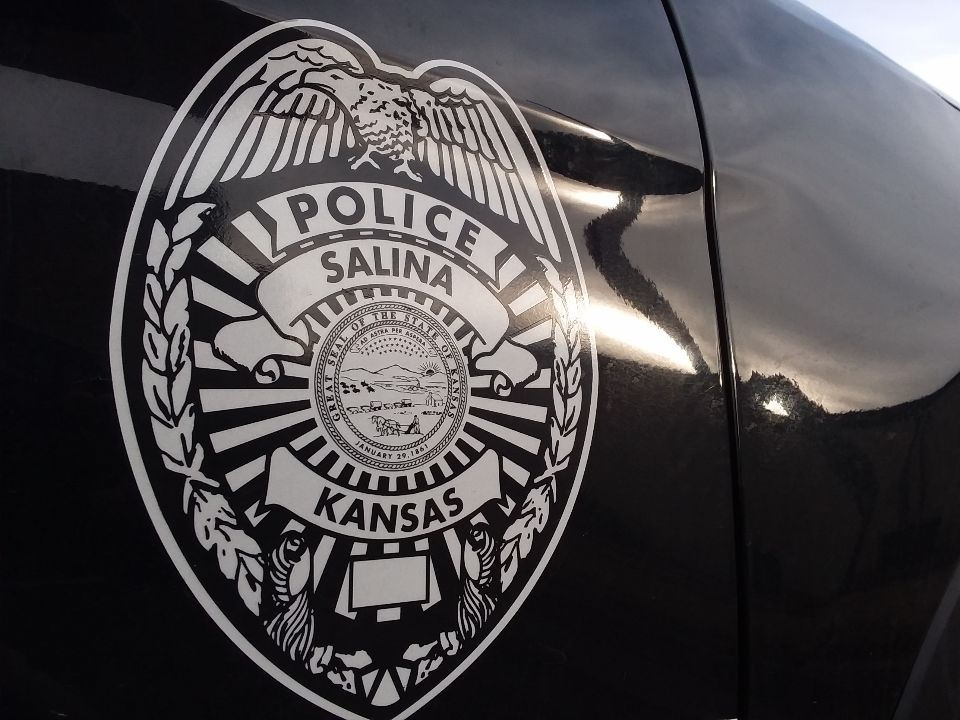How will this weekend’s ice storm compare to past ice storms in Kansas? Here are the top 5 all time Kansas ice storms as compiled by the National Weather Service.
1) December 10-11, 2007: Nearly all of Kansas. This horrific event was caused by devastating, widespread moderate to heavy freezing rain that resulted in equally widespread 1-2 inch ice accumulations. In fact, a few areas were coated by phenomenal 2-4 inch accumulations! Damage to trees, power lines and power poles was obviously staggering and made any attempt at travel treacherous, if not impossible. Power outages were, of course, widespread, affecting around 260,000 people. Many areas were without power for 1-2 weeks! Damage to the electrical infrastructure alone was estimated at $136.2 million, making this the costliest ice storm in Kansas history. Of this total, $37.5 million damage was assessed in Reno County. Such damage involved around 2,000 power poles and 7,900 spans of conductor. Around 5,400 lines and transformers required refusing. The statewide damage estimate is definitely conservative as most counties did not report their respective monetary losses. Damage estimates to buildings, trees and other foliage was unknown. Amazingly, no fatalities were reported!
2) January 29-31, 2002: Southwest, South-Central, and all of Eastern Kansas. Sleet and freezing rain caused horrific 1-4 inch ice accumulations across most areas. The greatest accumulations (that were ripe science fiction material) reached 2-4 inches in Southwest Kansas where, at the Stafford County Fairgrounds, the roof of a livestock building collapsed. In Northeast and East-Central Kansas the weight of the ice was also so great that the roofs of several other buildings also collapsed. One such casualty was a marina at Lake Perry where 19 boats were damaged or destroyed. Damage to trees, power lines, and in some cases, power poles, was obviously widespread, resulting in power outages that lasted 1-2 weeks. The total damage was estimated around $60 million.
3) January 4-5, 2005: Nearly all of Kansas. With a duration lasting from the morning of the 4th to the afternoon of the 5th, this event coated nearly all of the state with ½ to 2 inches of ice. Although the primary culprit was freezing rain, sleet greatly increased the magnitude of this event, accumulating to around 2 inches in many areas. Damage to trees and power lines was major! Trees as tall as 22 feet were split and fell, as did many limbs 6-12 inches in diameter that, in many cases, fell onto roads and highways as well as other power lines. Power outages, of course, were widespread and prolonged, with many towns experiencing multiple outages, lasting 1 ½ to 2 weeks. On the 5th, the ice storm had invaded Southeast Kansas, coating all but Labette County with 1-2 inches of ice. In all, 56 counties were declared disaster areas. Around $36.2 million damage resulted of which around $30 million occurred in South-Central Kansas. These damage estimates are likely conservative as most counties did not report their monetary losses from this event. The horrific winter storm claimed 4 lives and injured 2.
4) March 18-19, 1984: Southwest to Northeast Kansas. Freezing rain, some associated with embedded thunderstorms, produced 1-2 inch ice accumulations on all exposed surfaces. Topeka was hit especially hard as the heavy weight of the ice severed power to around 100,000 people, or about 82% of the city’s population. A large TV transmission tower collapsed along with hundreds of trees, power lines and power poles. Damage was believed to be even worse than the F5 tornado of June 8th, 1966. Believed to be the worst ice storm in Topeka’s history and among the worst in Kansas History (no specifics on exact ranking were provided), power wasn’t restored to some areas for a week.
5) March 15-17, 1998: Southwest to North-Central Kansas. This nearly 2-day event resulted in widespread 1/2-2 inch accumulations. However there were reports of staggering 4-6 inch accumulations on extremely elevated structures such as radio towers. For example, an 800-foot tower in Southwest Kansas collapsed after a reported 6-inch accumulation. In fact, every radio tower in Southwest and West-Central Kansas received significant accumulations resulting in damage that, in some cases, resulted from ice falling from the towers in question. Damage was estimated at $3.485 million with power outages lasting 6 days.



